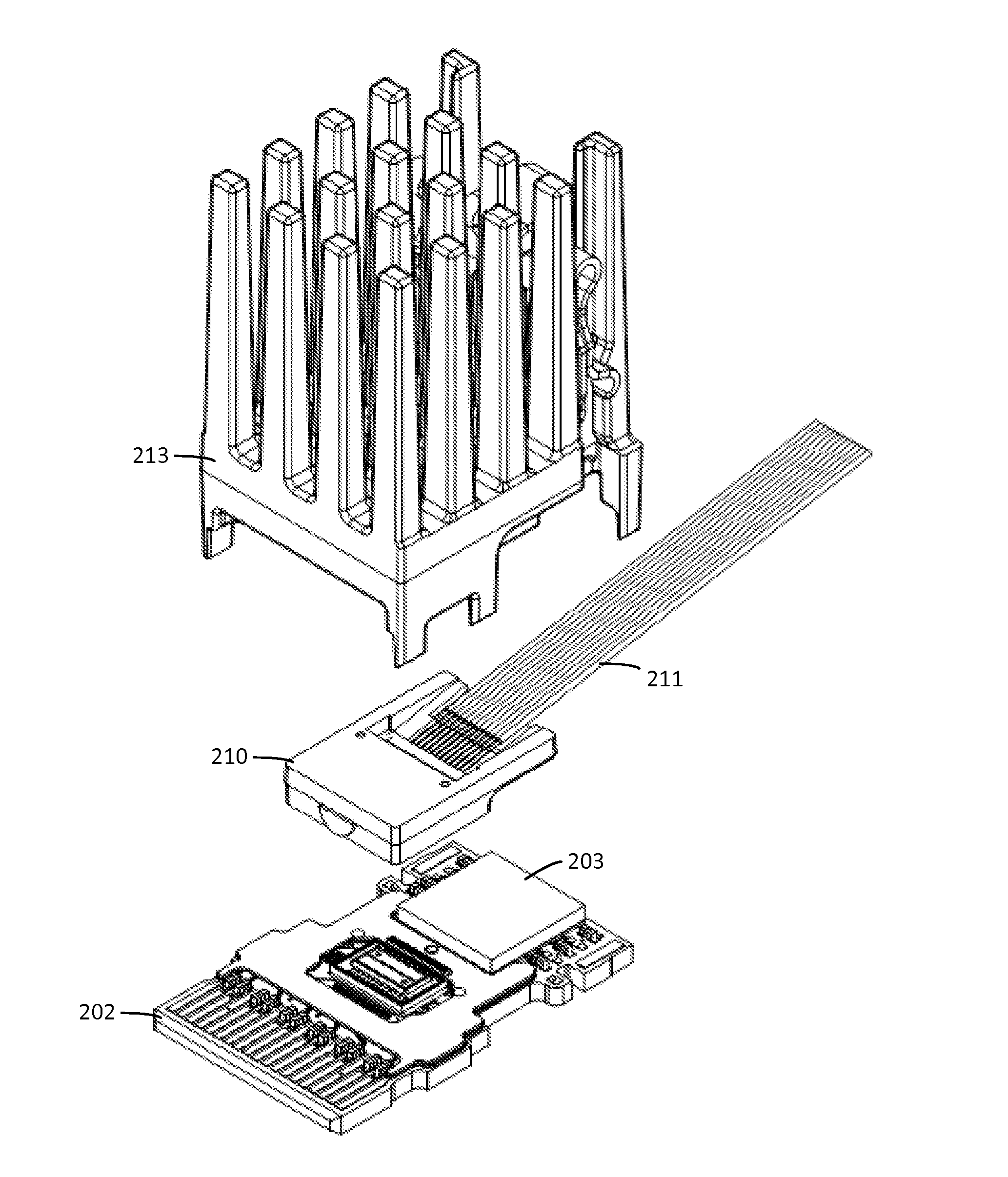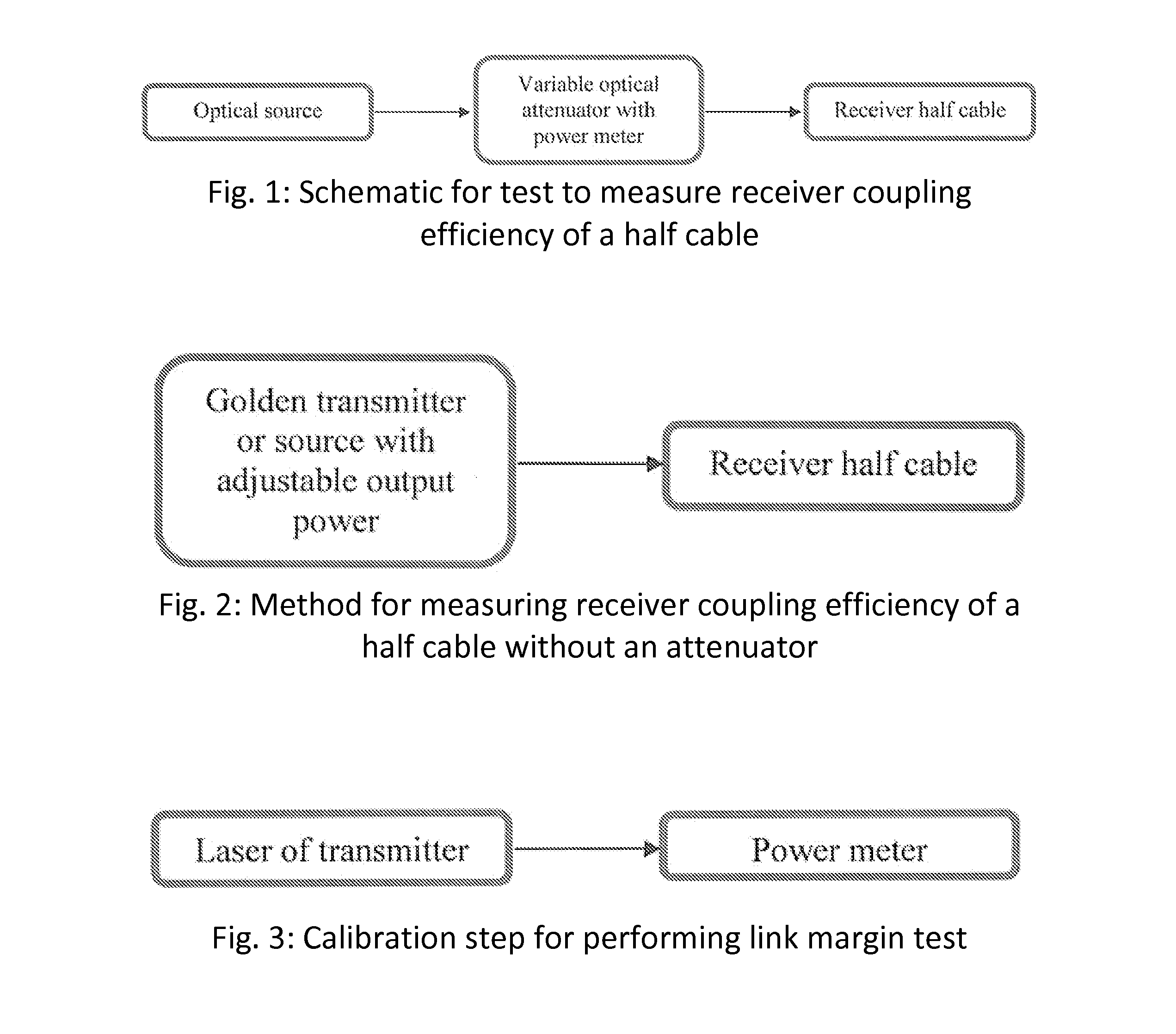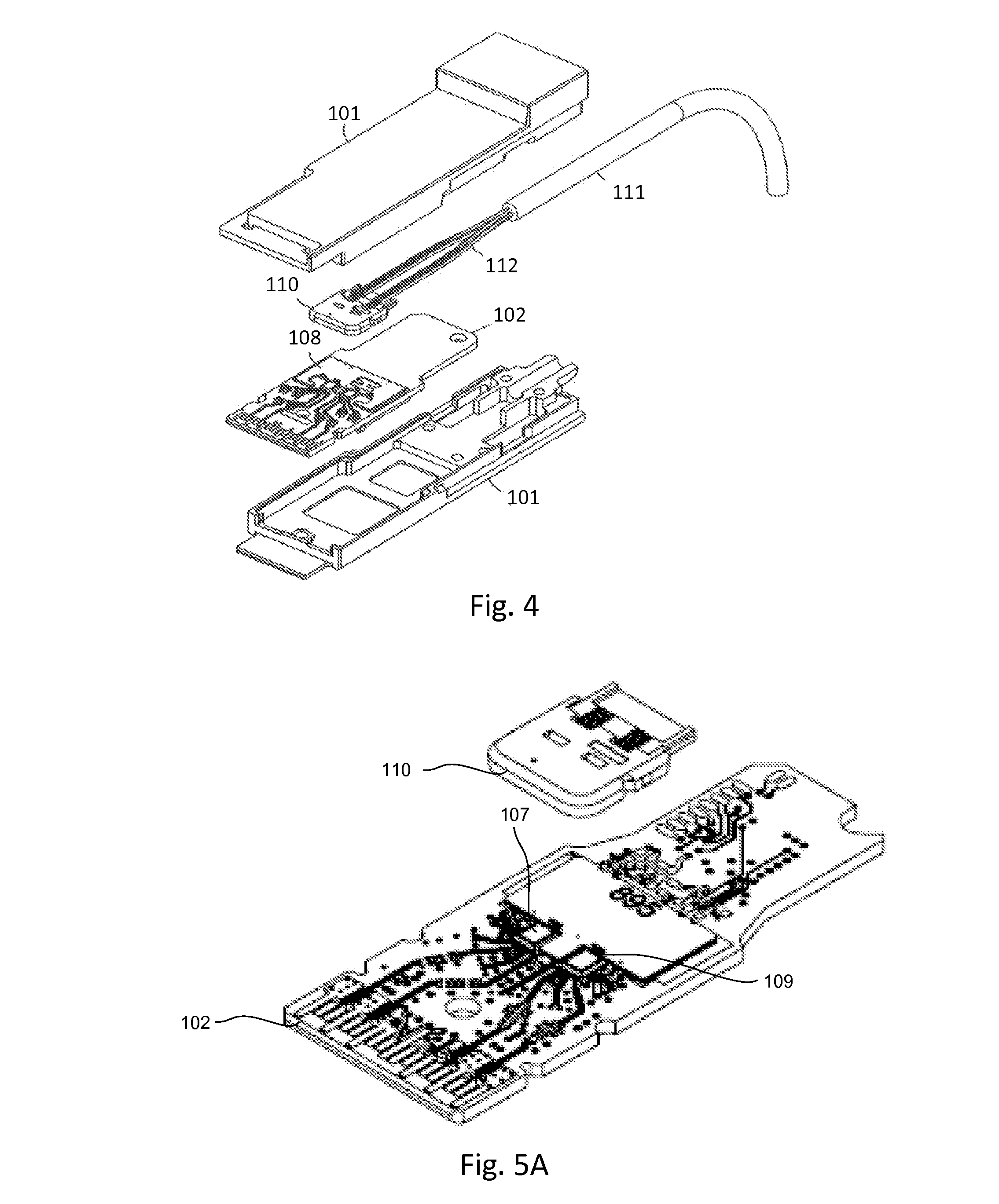Methods for determining receiver coupling efficiency, link margin, and link topology in active optical cables
a receiver coupling efficiency and active optical cable technology, applied in the field of active optical cables, can solve the problems of difficult or impossible measurement of receiver coupling efficiency, difficult or impossible measurement of how well the optical fiber is aligned with the lens or how, and the problem of both full and half aocs
- Summary
- Abstract
- Description
- Claims
- Application Information
AI Technical Summary
Benefits of technology
Problems solved by technology
Method used
Image
Examples
Embodiment Construction
[0044]The preferred embodiments of the present invention provide methods for determining receiver coupling efficiency, link margin, and link topology in AOCs. The methods of the preferred embodiments are grouped into the following subsets:[0045]1) a test that can be used to measure the receiver coupling efficiency of half AOCs;[0046]2) a test that can be used to measure the link margin for closed links with full AOCs or mated pairs of half AOCs; and[0047]3) a test that can be used to determine which receiver is mated to a given transmitter to determine link topology.
[0048]The receiver coupling efficiency can be measured using a method according to a preferred embodiment of the present invention by injecting a known amount of optical power and by recording when the TIA goes into squelch.
[0049]Optical signals are typically transmitted as digital signals, i.e., as zeros and ones. Optical zero signals are transmitted at a reduced power level, e.g. 50% of the ...
PUM
 Login to View More
Login to View More Abstract
Description
Claims
Application Information
 Login to View More
Login to View More - R&D
- Intellectual Property
- Life Sciences
- Materials
- Tech Scout
- Unparalleled Data Quality
- Higher Quality Content
- 60% Fewer Hallucinations
Browse by: Latest US Patents, China's latest patents, Technical Efficacy Thesaurus, Application Domain, Technology Topic, Popular Technical Reports.
© 2025 PatSnap. All rights reserved.Legal|Privacy policy|Modern Slavery Act Transparency Statement|Sitemap|About US| Contact US: help@patsnap.com



